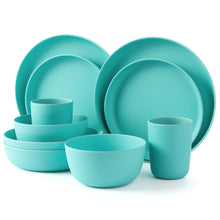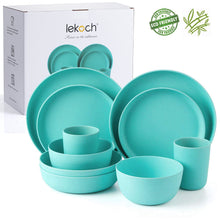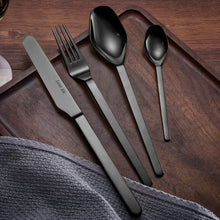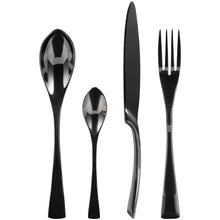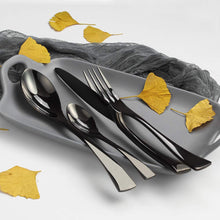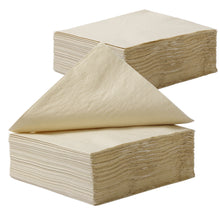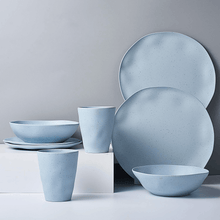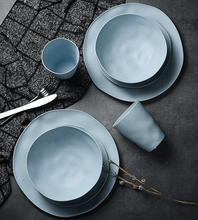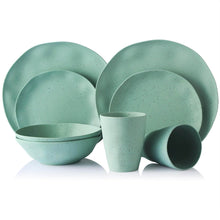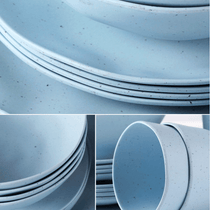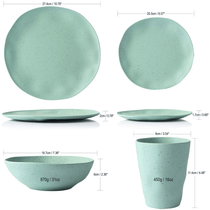Blog
The Difference Between Biodegradable PLA Plates and Bamboo Plates
What is Bamboo fiber plates?
Bamboo fiber plates is the tableware made of bamboo fiber as raw material. Bamboo fiber is mainly made of bamboo as raw material, through a special high-tech process to extract the cellulose in the bamboo, through the process of gum making, spinning and other processes to make the recycled fiber. Then the extracted regenerated fiber and corn starch, resin and other materials, through the hot high-pressure die-casting molding, and finally stickers can be made bamboo fiber tableware finished products.
Therefore, the main components of bamboo fiber tableware are bamboo fiber, corn starch and dense amine resin, among which, the composition of bamboo fiber accounts for the most.
What is PLA Biodegradable Plates?
PLA Biodegradable plates is made from annually renewable corn, cassava, sugar cane, sugar beets, and wheat. These raw materials are first fermented and distilled to produce lactic acid. The lactic acid is then refined, dehydrated and polymerized, depolymerized at high temperatures, and finally polymerized, converting the lactic acid into PLA. PLA plates is made from starch by extracting the starch from the plant.
Polylactic acid, most often referred to as PLA, is a polymer made from renewable resources that has properties comparable to other plastics in the industry. These properties and the desire of consumers to use a less impactful material have triggered its rapid entry into the plastics market as a competitive commodity.
Advantages of PLA Biodegradable Plates
PLA is bio-based and biodegradable. It undergoes fermentation and distillation to produce lactic acid. PLA undergoes a process of conversion into natural materials, such as water and carbon dioxide. This process is carried out by microorganisms in the environment and is highly dependent on conditions such as temperature and humidity.
PLA is a thermoplastic, which means that it can be melted and remolded without significantly reducing its mechanical properties. Therefore, PLA is mechanically recyclable.
It comes from renewable sources, in contrast to petroleum-based plastics, which are in limited supply.
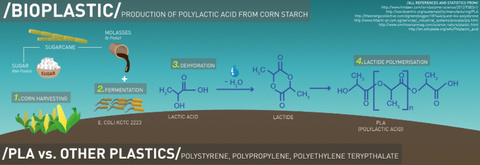
Disadvantage:
Due to the high demand of raw materials for production and the global trend of plastic restriction, the price of raw materials has increased, making the product unit price expensive.
The difference between PLA Biodegradable plates and bamboo fiber plates
Both PLA and bamboo fiber are made from plant material, and after a series of processing into tableware, they both have the ability to be renewable and biodegradable.
Do PLA Biodegradable plates and bamboo fiber plates contain Melamine ?
PLA biodegradable plates is the starch extracted from plants, through a certain way to make PLA plates, the process is free of any other toxic and harmful substances, including melamine , while bamboo fiber plates is the bamboo fiber powder, corn starch and melamine about overheating high-pressure die-casting molding, made of bamboo fiber tableware, because the bamboo powder itself is a tough material, there is no way to make a good plate, so you need a binder, this link used dense amine, but lekoch production of bamboo fiber using the highest food-grade material, is not contain BPA, non-toxic and harmless, you can rest assured that use.
Are PLA Biodegradable plates and bamboo fiber plates dishwasher and microwave safe?
PLA plates and bamboo fiber plates are both dishwasher safe. Due to the special raw material of PLA, PLA plates can enter the microwave oven, therefore, PLA tableware can be used in a wider range.
Please note: the maximum temperature of using dishwasher should not exceed 70℃, while the maximum temperature of using microwave oven should not exceed 100℃.
Are PLA biodegradable plates and bamboo fiber plates biodegradable and compostable?
Since the raw material used to produce bamboo fiber plates contains a small amount of Melamine, bamboo fiber plates is partially, but not completely, biodegradable in a given environment.
The raw material of PLA plates originates from nature, therefore, it is completely degradable and compostable after it is buried in the soil at the end of use in a certain environment, and after a period of time, PLA tableware will decompose into carbon dioxide and water and disappear in the soil.
In short, PLA plates and bamboo fiber plates are two reusable tableware, and, compared to ceramic tableware, these two tableware is not fragile, easy to clean, and rich in color. Both tableware are made of environmentally friendly, non-toxic and non-hazardous raw materials, so you can use them with confidence. Because these two tableware is light and easy to carry, is the best choice for many families to travel, caravans, camping, parties.
LEKOCH launched a few PLA tableware this year, in fact, is also in the bamboo fiber tableware above the innovation and reform. At the beginning of the launch of bamboo fiber tableware, LEKOCH is the concept of environmental protection to their own, from the partial degradation of the product to the full degradation of the product.
LEKOCH hopes to bring more trustworthy green products to the consumers.


